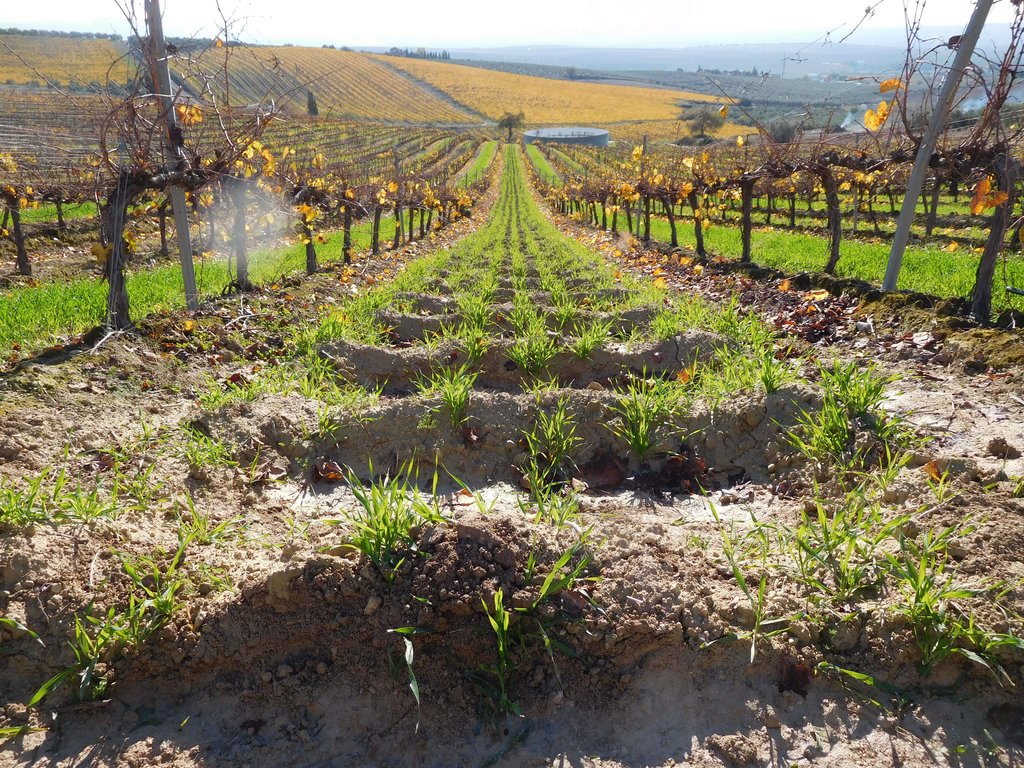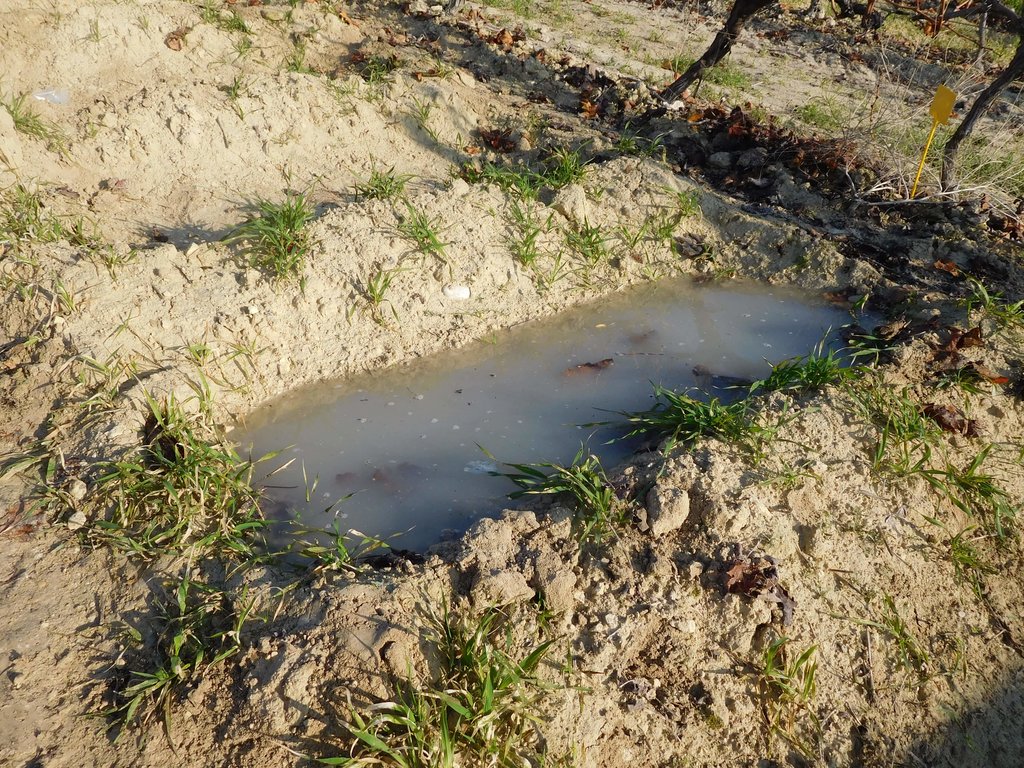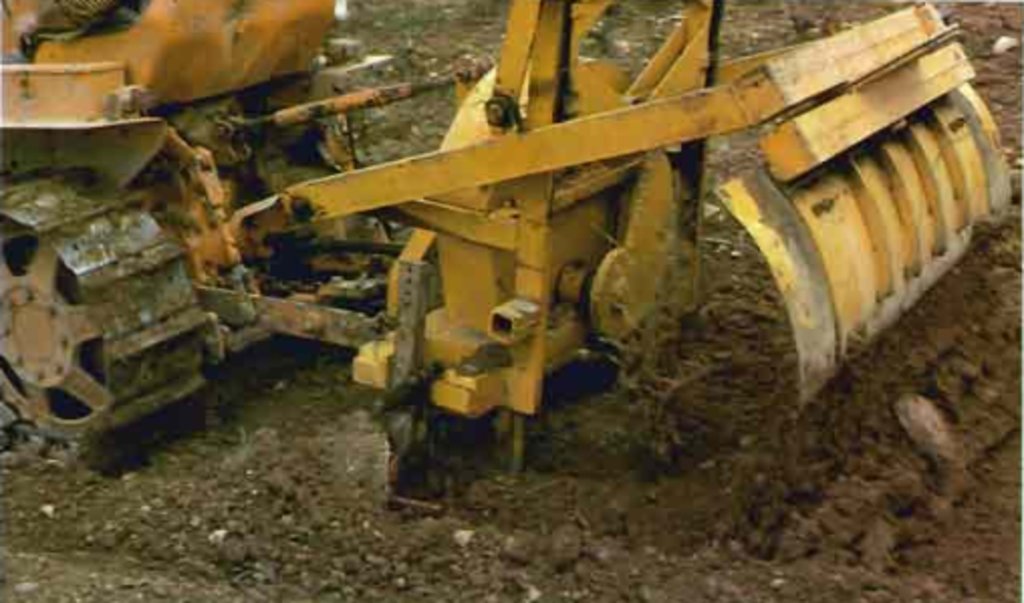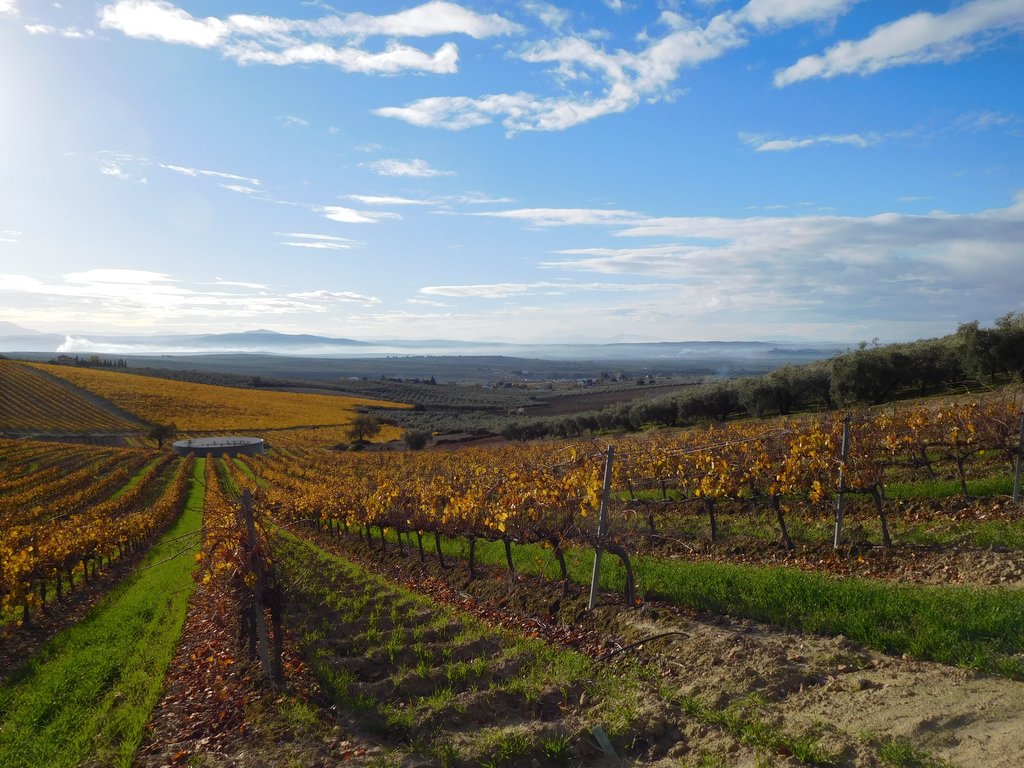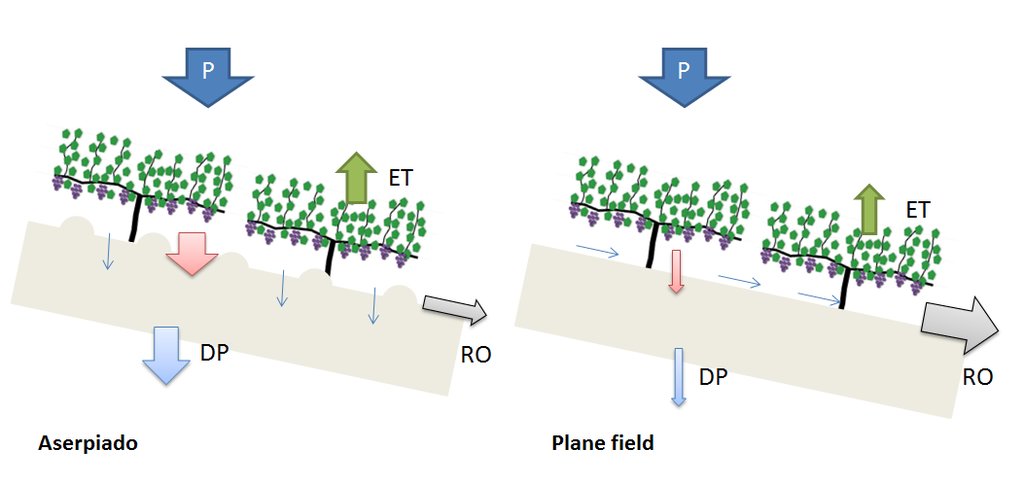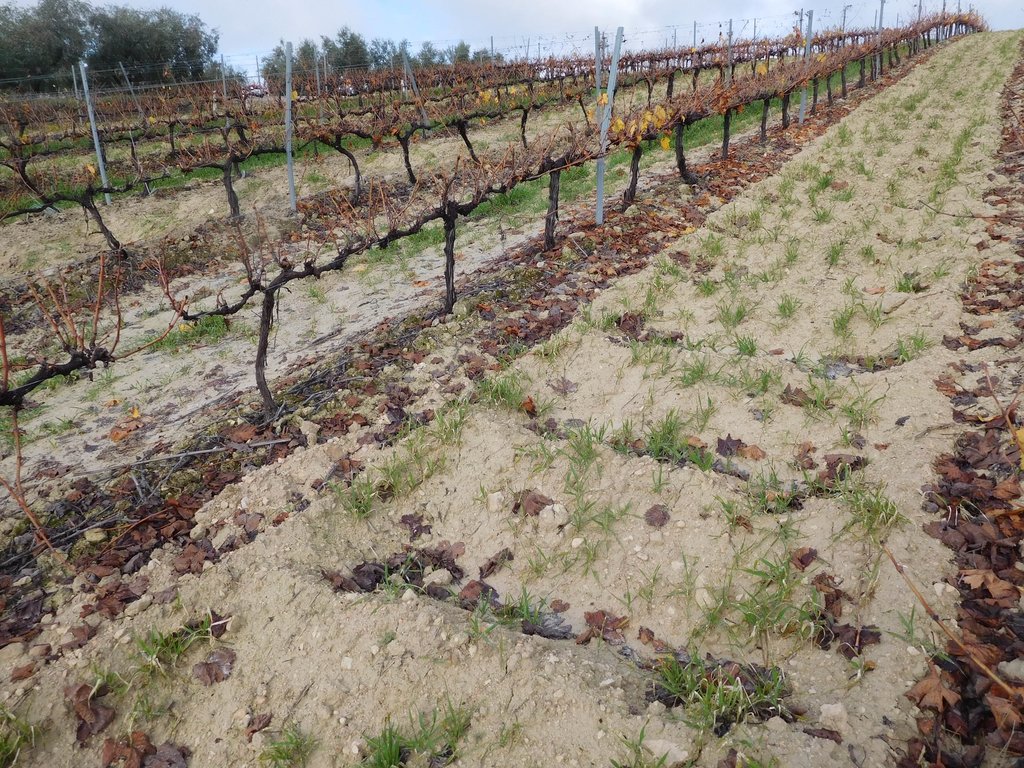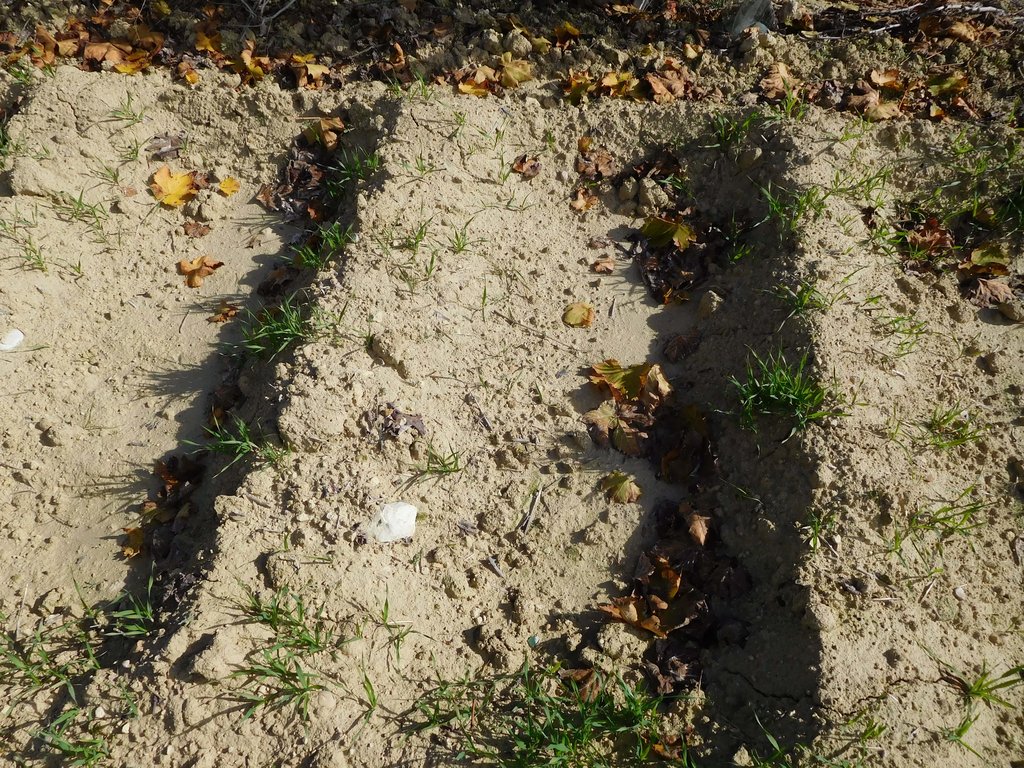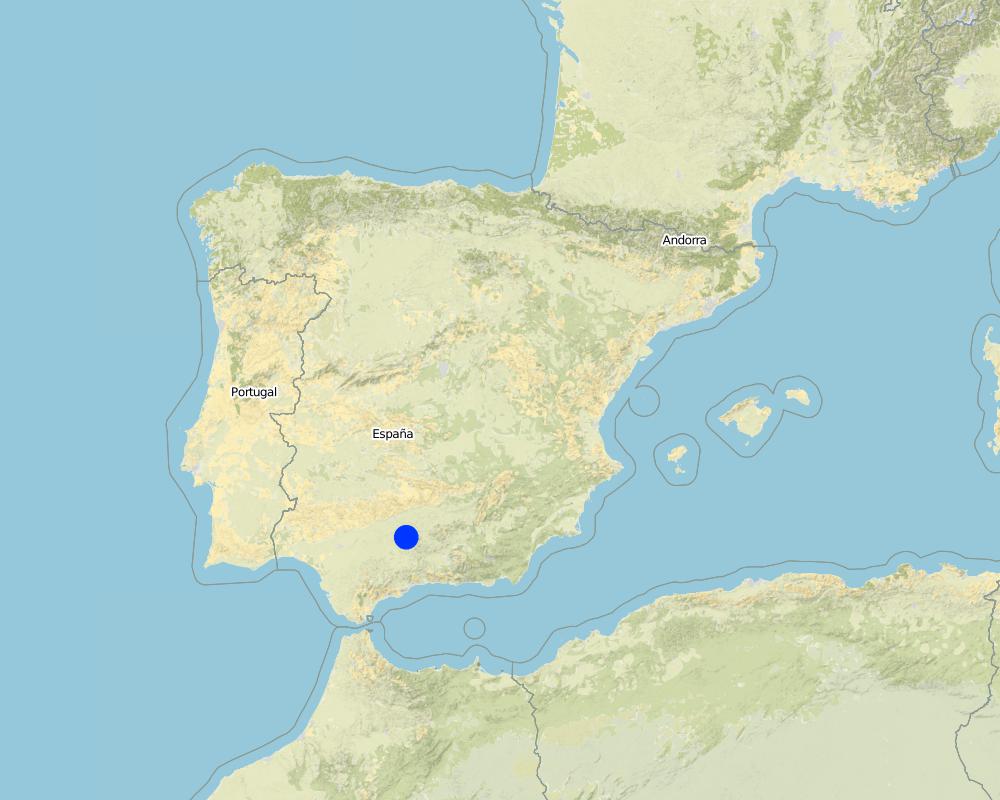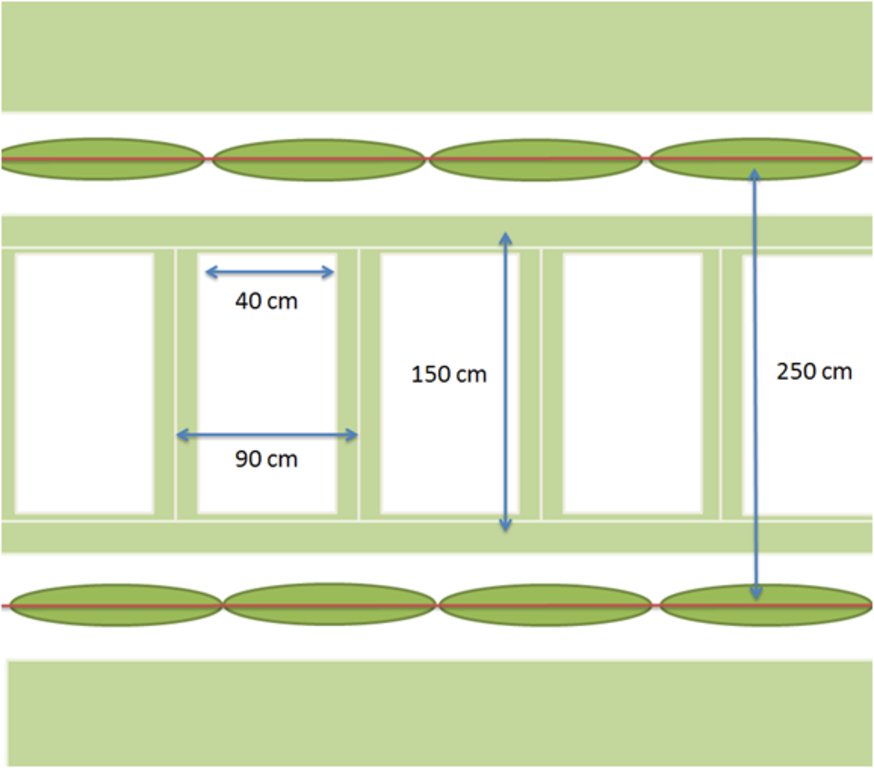Aserpiado [Spain]
- Creation:
- Update:
- Compiler: Wolfgang Duifhuizen
- Editor: Gema Guzmán
- Reviewers: Ursula Gaemperli, Alexandra Gavilano
Aserpiado or Alumbrado
technologies_907 - Spain
View sections
Expand all Collapse all1. General information
1.2 Contact details of resource persons and institutions involved in the assessment and documentation of the Technology
land user:
Jiménez Manuel
Finca Cañada Navarro
Spain
land user:
Jiménez Santiago
Finca Cañada Navarro
Spain
SLM specialist:
Name of the institution(s) which facilitated the documentation/ evaluation of the Technology (if relevant)
Wageningen Environmental Research (Alterra) (Wageningen Environmental Research (Alterra)) - NetherlandsName of the institution(s) which facilitated the documentation/ evaluation of the Technology (if relevant)
Consejo Superior de Investigaciones Científicas - Instituto de Agricultura Sostenible (CSIC - IAS) - Spain1.3 Conditions regarding the use of data documented through WOCAT
The compiler and key resource person(s) accept the conditions regarding the use of data documented through WOCAT:
Ja
1.4 Declaration on sustainability of the described Technology
Is the Technology described here problematic with regard to land degradation, so that it cannot be declared a sustainable land management technology?
Nee
2. Description of the SLM Technology
2.1 Short description of the Technology
Definition of the Technology:
Aserpias are micro-depressions within a field along all or alternate inter vines rows, made by a tillage tool. The main objective of implementing Aserpiado is to let water infiltrate on-site, thereby increasing soil moisture and plant available water, decreasing runoff and associated losses of soil.
2.2 Detailed description of the Technology
Description:
Aserpiado (also known as Alumbrado) is applied in vineyards in Southern Spain in lower and mid altitudes where the climate is characterized by relative high rainfall during winter, but almost none in summer. This requires adoptions in the water management like irrigation or on-site storage of water.
With the aserpiado technique, seasonal soil bunds are made every autumn in order to limit irrigation requirements and to protect the soil against erosion. These contour bunds in the allies remain in place the entire winter to make best use of precipitation that occurs mostly during this period.
The functioning of Aserpias was analysed in a vineyard within the Appellation of Origin Montilla-Moriles in Córdoba, the only previously existing documentation on this measure comes from vineyards in the Jerez wine region. Farmers use Aserpiado because it is the only way to get enough water without irrigation, as when irrigation is applied it cannot get the protected ‘Jerez-Sherry’ label.
The microbasins are made in the inter-row area by dragging a caterpillar tractor pulled (see picture Aserpiadora) hydraulic beam over the field which lifts leaving a heap of soil behind. The speed and interval of the beam are set in such a way that a bund is made every 1.5 meter. Some users sow barely directly in advance of making the aserpiado which results in a high plant cover of the bunds during winter. The main function of Aserpiado is to catch rainwater which otherwise would be lost runoff. With Aserpiado the runoff is close to zero this means more water should become available for the crops.
The required inputs for creating and maintaining aserpias depends upon whether the bunds are permanent or seasonal. If permanent the ridges should be checked regulary and maintained by hand. When the aserpiado is only present during the winter season regular tillage in summer is necessary to keep the soil workable so the 'aserpiadora' (specialized tillage tool) can create the aserpias in autumn which are removed in spring to ease field traffic. With a modern-day Aserpiadora a farmer can create 3 to 5 ha of aserpias a day (Narvaez, 1980). The impacts of establishing aserpias are less soil erosion, less runoff and more water storage in the soil. Land users like Aserpiado as it is a very effective way to increase soil moisture and reduce soil erosion, when used in combination with cover crops the soil quality also improves over time.
2.3 Photos of the Technology
General remarks regarding photos:
url source of Aserpiadora picture: http://www.mapama.gob.es/ministerio/pags/biblioteca/hojas/hd_1980_19.pdf
2.5 Country/ region/ locations where the Technology has been applied and which are covered by this assessment
Country:
Spain
Region/ State/ Province:
Andalucia, Cordoba Province
Further specification of location:
Finca Cañada Navarro, Montilla
Specify the spread of the Technology:
- applied at specific points/ concentrated on a small area
Comments:
The only previously existing documentation on Aserpias features vineyards of D.O. Jerez, but is also used elsewhere like in the D.O. of Montilla-Moriles data was compiled. Popularity of this measure is unknown as very little documentation exists.
Map
×2.6 Date of implementation
If precise year is not known, indicate approximate date:
- less than 10 years ago (recently)
2.7 Introduction of the Technology
Specify how the Technology was introduced:
- through land users' innovation
- as part of a traditional system (> 50 years)
Comments (type of project, etc.):
Written texts exist of Aserpias being used in vineyards near Jerez de la Frontera in the 1860's which were made either by hand with a hoe or with a mule dragging a beam (Gonzalez Moreno, 2011). It is not an easily found in the Montilla-Moriles region; it is mainly developed in the Appellation of Origin of Jerez. However, the combination of Aserpiado and cover crops is the result of the innovation of some farmers who have been implementing it since 2011.
Aserpias have been used since the XIX century mainly in the Jerez being a common practice not only in vineyards but also in olive orchards, especially in steep slopes farms. No data found about the actual extension of this practice. The combined used with cover crops is fundamentally implemented by this farmer who started doing this practice in 120 ha.
3. Classification of the SLM Technology
3.1 Main purpose(s) of the Technology
- improve production
- reduce, prevent, restore land degradation
- protect a watershed/ downstream areas – in combination with other Technologies
- adapt to climate change/ extremes and its impacts
- create beneficial economic impact
3.2 Current land use type(s) where the Technology is applied

Cropland
- Annual cropping
- Perennial (non-woody) cropping
- Tree and shrub cropping
Annual cropping - Specify crops:
- cereals - barley
Tree and shrub cropping - Specify crops:
- grapes
Number of growing seasons per year:
- 1
Comments:
Aserpias are only used if vine rows are perpendicular to slope. Documentation exists also of Aserpias being used in olive orchards (Narvaez, 1980).
Biodiversity was not analyzed.
3.4 Water supply
Water supply for the land on which the Technology is applied:
- rainfed
Comments:
Measure is applied to decrease necessity of supplemental irrigation.
3.5 SLM group to which the Technology belongs
- improved ground/ vegetation cover
- water harvesting
- irrigation management (incl. water supply, drainage)
3.6 SLM measures comprising the Technology

agronomic measures
- A1: Vegetation/ soil cover
- A3: Soil surface treatment

vegetative measures
- V2: Grasses and perennial herbaceous plants
Comments:
Cover crops are not used in all sites with Aserpiado
3.7 Main types of land degradation addressed by the Technology

soil erosion by water
- Wt: loss of topsoil/ surface erosion
- Wg: gully erosion/ gullying
Comments:
Local circumstances and agricultural practices make agricultural soils very prone to water erosion.
3.8 Prevention, reduction, or restoration of land degradation
Specify the goal of the Technology with regard to land degradation:
- prevent land degradation
- reduce land degradation
Comments:
The main goal is to increase water availability, but also decreases soil losses in inter-row areas.
4. Technical specifications, implementation activities, inputs, and costs
4.1 Technical drawing of the Technology
Technical specifications (related to technical drawing):
The bunds stretch over most of the inter-row alley, but in order not to expose superficial roots the bunds are 1.5 m wide so at each side there is about half a meter distance from the stems. Often the bunds are covered with barley and pruning residues. The bunds itself are 15 to 20 cm high and usually spaced 90 cm apart leaving 40 cm space at the base. At Cañada Navarro the Aserpia-bunds and sides are covered with barley as a cover crop during winter, in other sites where Aserpiado is applied the bunds remain bare.
Author:
Wolfgang Duifhuizen
Date:
23/01/2017
4.2 General information regarding the calculation of inputs and costs
Specify how costs and inputs were calculated:
- per Technology area
Indicate size and area unit:
22 hectares
other/ national currency (specify):
Euros
If relevant, indicate exchange rate from USD to local currency (e.g. 1 USD = 79.9 Brazilian Real): 1 USD =:
0.94
4.5 Maintenance/ recurrent activities
| Activity | Timing/ frequency | |
|---|---|---|
| 1. | Tillage with cultivator (15-20 cm deep) | After harvest crop |
| 2. | Sowing barley in allies | Autumn |
| 3. | Making aserpias in every other alley | Soon after sowing barley |
| 4. | Killing cover crop | Early in march |
| 5. | Tillage with cultivator (removing aserpias) | After killing the cover crop |
4.6 Costs and inputs needed for maintenance/ recurrent activities (per year)
| Specify input | Unit | Quantity | Costs per Unit | Total costs per input | % of costs borne by land users | |
|---|---|---|---|---|---|---|
| Labour | Tractor driver | h/ha | 5.5 | 40.0 | 220.0 | 96.0 |
| Equipment | Scarifier | h/ha | 1.5 | 40.0 | 60.0 | 100.0 |
| Equipment | Seeder | h/ha | 2.25 | 40.0 | 90.0 | 100.0 |
| Equipment | Aserpiadora | h/ha | 1.5 | 40.0 | 60.0 | 100.0 |
| Equipment | Cultivator | h/ha | 1.5 | 40.0 | 60.0 | 100.0 |
| Plant material | Barley seed | kg/ha | 80.0 | 0.2 | 16.0 | |
| Fertilizers and biocides | Herbicide** | l/ha | 3.0 | 6.67 | 20.01 | |
| Total costs for maintenance of the Technology | 526.01 | |||||
| Total costs for maintenance of the Technology in USD | 559.59 | |||||
Comments:
*herbicide is not used when mechanical control is applied
4.7 Most important factors affecting the costs
Describe the most determinate factors affecting the costs:
The cost of Aserpiado and sown tasks compared to conventional farming.
5. Natural and human environment
5.1 Climate
Annual rainfall
- < 250 mm
- 251-500 mm
- 501-750 mm
- 751-1,000 mm
- 1,001-1,500 mm
- 1,501-2,000 mm
- 2,001-3,000 mm
- 3,001-4,000 mm
- > 4,000 mm
Specify average annual rainfall (if known), in mm:
600.00
Specifications/ comments on rainfall:
High annual variability and erratic rainfall patterns, historical precipitation records show an annual variation between 300 and 1200 mm.
Indicate the name of the reference meteorological station considered:
Santaella IFAPA station
Agro-climatic zone
- semi-arid
The Montilla region characterized by hot and dry summers, chilly winters and very few days of rainfall.
5.2 Topography
Slopes on average:
- flat (0-2%)
- gentle (3-5%)
- moderate (6-10%)
- rolling (11-15%)
- hilly (16-30%)
- steep (31-60%)
- very steep (>60%)
Landforms:
- plateau/plains
- ridges
- mountain slopes
- hill slopes
- footslopes
- valley floors
Altitudinal zone:
- 0-100 m a.s.l.
- 101-500 m a.s.l.
- 501-1,000 m a.s.l.
- 1,001-1,500 m a.s.l.
- 1,501-2,000 m a.s.l.
- 2,001-2,500 m a.s.l.
- 2,501-3,000 m a.s.l.
- 3,001-4,000 m a.s.l.
- > 4,000 m a.s.l.
Indicate if the Technology is specifically applied in:
- not relevant
5.3 Soils
Soil depth on average:
- very shallow (0-20 cm)
- shallow (21-50 cm)
- moderately deep (51-80 cm)
- deep (81-120 cm)
- very deep (> 120 cm)
Soil texture (topsoil):
- medium (loamy, silty)
Soil texture (> 20 cm below surface):
- medium (loamy, silty)
Topsoil organic matter:
- medium (1-3%)
If available, attach full soil description or specify the available information, e.g. soil type, soil PH/ acidity, Cation Exchange Capacity, nitrogen, salinity etc.
Most soils in the region are Cambisols by FAO classification with quite homogeneous well-drained soil consisting mostly of silty clay loam which has a good water holding capacity.
5.4 Water availability and quality
Ground water table:
5-50 m
Availability of surface water:
medium
Is water salinity a problem?
Nee
Is flooding of the area occurring?
Nee
5.5 Biodiversity
Species diversity:
- medium
Habitat diversity:
- medium
Comments and further specifications on biodiversity:
Biodiversity was not analyzed
5.6 Characteristics of land users applying the Technology
Sedentary or nomadic:
- Sedentary
Market orientation of production system:
- commercial/ market
Relative level of wealth:
- average
Individuals or groups:
- individual/ household
- cooperative
Level of mechanization:
- mechanized/ motorized
5.7 Average area of land used by land users applying the Technology
- < 0.5 ha
- 0.5-1 ha
- 1-2 ha
- 2-5 ha
- 5-15 ha
- 15-50 ha
- 50-100 ha
- 100-500 ha
- 500-1,000 ha
- 1,000-10,000 ha
- > 10,000 ha
Is this considered small-, medium- or large-scale (referring to local context)?
- large-scale
5.8 Land ownership, land use rights, and water use rights
Land ownership:
- company
- individual, titled
Land use rights:
- individual
5.9 Access to services and infrastructure
health:
- poor
- moderate
- good
education:
- poor
- moderate
- good
technical assistance:
- poor
- moderate
- good
employment (e.g. off-farm):
- poor
- moderate
- good
markets:
- poor
- moderate
- good
energy:
- poor
- moderate
- good
roads and transport:
- poor
- moderate
- good
drinking water and sanitation:
- poor
- moderate
- good
financial services:
- poor
- moderate
- good
6. Impacts and concluding statements
6.1 On-site impacts the Technology has shown
Socio-economic impacts
Water availability and quality
demand for irrigation water
Ecological impacts
Water cycle/ runoff
harvesting/ collection of water
surface runoff
groundwater table/ aquifer
Comments/ specify:
Water balance modelling on aserpiado fields indicate a high percolation rate
Soil
soil moisture
soil loss
6.4 Cost-benefit analysis
How do the benefits compare with the establishment costs (from land users’ perspective)?
Short-term returns:
very positive
Long-term returns:
very positive
How do the benefits compare with the maintenance/ recurrent costs (from land users' perspective)?
Short-term returns:
neutral/ balanced
Long-term returns:
neutral/ balanced
6.5 Adoption of the Technology
- single cases/ experimental
If available, quantify (no. of households and/ or area covered):
120 ha (in Montilla-Moriles region)
Of all those who have adopted the Technology, how many did so spontaneously, i.e. without receiving any material incentives/ payments?
- 91-100%
6.6 Adaptation
Has the Technology been modified recently to adapt to changing conditions?
Nee
6.7 Strengths/ advantages/ opportunities of the Technology
| Strengths/ advantages/ opportunities in the land user’s view |
|---|
|
1. Storage of water from winter rainfalls. 2. Control of soil erosion. 3. Benefits associated to the cover crops. |
| Strengths/ advantages/ opportunities in the compiler’s or other key resource person’s view |
|---|
|
Control of erosion Increasing infiltration |
6.8 Weaknesses/ disadvantages/ risks of the Technology and ways of overcoming them
| Weaknesses/ disadvantages/ risks in the land user’s view | How can they be overcome? |
|---|---|
| No significant disadvantages or higher cost have been noticed compared to a cover crop farm. |
| Weaknesses/ disadvantages/ risks in the compiler’s or other key resource person’s view | How can they be overcome? |
|---|---|
| If the aserpiado fails, concentration of runoff in rills will easily occur. | To make aserpiado large enough to not be overtopped by regular rainstorms, also bunds need to be checked for stability. |
7. References and links
7.1 Methods/ sources of information
- field visits, field surveys
- interviews with land users
Interview with Manuel Jiménez and Santiago Jiménez; agricultural engineers/ vinegrowers working for the Lagar Cañada Navarro wine farm.
- compilation from reports and other existing documentation
When were the data compiled (in the field)?
01/12/2016
7.3 Links to relevant online information
Title/ description:
El Alumbrado para acumalacion del agua en cultivos leñosos de secano, Revilla Narvaez (in Spanish)
URL:
http://www.mapama.gob.es/ministerio/pags/biblioteca/hojas/hd_1980_19.pdf
Title/ description:
APROVECHAMIENTO DE LAS LLUVIAS EN VIÑEDOS SITUADOS EN LADERAS Y PENDIENTES MEDIANTE “ASERPIADO”, José Mª González Moreno, 2011
Title/ description:
Los viticultores del Marco de Jerez apuestan por la Producción Integrada
URL:
http://www.mapama.gob.es/ministerio/pags/biblioteca/revistas/pdf_vrural/Vrural_1999_87_54_55.pdf
Links and modules
Expand all Collapse allLinks
No links
Modules
No modules




